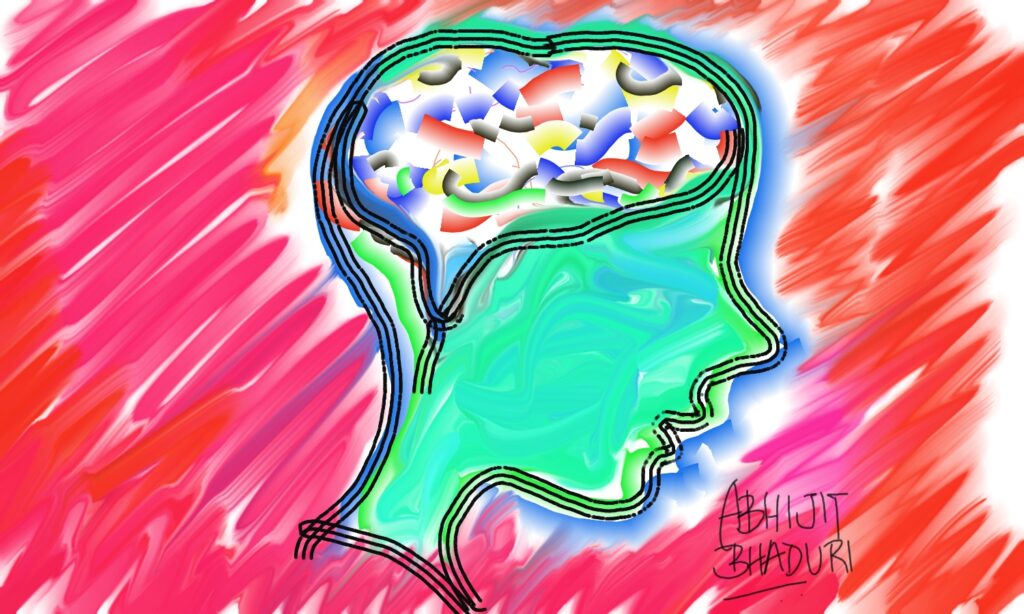A study published in Frontiers in Human Neuroscience proposes a new model for the treatment of adolescents diagnosed with major depressive disorder (MDD). The researchers, led by neuroscientist Eva Henje Blom in Sweden, remark that antidepressant treatment for mild to moderate depression in adolescents has not been shown to be effective and that there is the potential for short and long-term negative side-effects. Despite this, over 14% of US adolescents diagnosed with a primary mood disorder are currently being treated with antidepressants. In this paper, the researchers hope to promote a new approach and suggest a therapeutic training program that draws on neuroscience to target specific domains of function.

“The program prioritizes the core domains of function hypothesized to drive the pathophysiology of adolescent depression and employs straightforward and feasible treatment strategies that have been selected based on current scientific evidence,” the researchers write.
“We hope that this work may form the basis for a novel and more effective treatment strategy for adolescent depression, as well as open up a discussion on how to take on this challenge.”
The authors attempt to draw on studies on the neurobiology of depression to develop a series of interventions that target particular domains of function in the brain. This research model is motivated by the National Institute of Mental Health’s (NIMH) RDoC Project. The RDoC project represents a shift in the research priorities of the NIMH away from psychotherapy trials based on DSM diagnoses and toward interventions that target specific domains of brain function. This initiative is not without controversy, however. Some psychologists have criticized the assumption that “psychological problems are best understood as ‘disorders of brain circuits,’” while others have warned that the reductionistic approach is likely to divert funds away from psychosocial treatments.
The authors of the current study acknowledge that the entire RDoC enterprise “is based on the assumption that mental illnesses are related to dysfunction of relevant brain circuits, which can be identified by clinical neuroscience,” but also acknowledge an opportunity to advance research on ‘adolescent depression’ within this framework. Past research on this construct has been confounded by the low diagnostic validity and specificity of the disorder as it is described within the DSM system. These unclear diagnostic boundaries often leave researchers with heterogeneous samples that can bias results. Within the RDoC approach, however, researchers will attempt to study changes to brain patterns following interventions, rather than changes in diagnostic severity. The researchers explain:
“The RDoC approach gives us an opportunity to address specific dimensions of psychopathology in a hierarchical manner according to what we hypothesize drives the pathophysiology of adolescent depression. For instance, giving priority to target anxious arousal, worrying and rumination specifically, allows us to assess these dimensions from a neuroscience perspective. We aim to find out whether this approach will aid the development of a more targeted and efficient treatment for adolescent depressive symptoms.”
After summarizing the existing neuroscience research attempting to identify specific brain regions and activity correlated with symptoms typically associated with adolescent depression, the researchers suggest two ‘pathophysiological trajectories’ that may be involved in the emergence of depression symptoms. The first being limbic hyperactivation, associated with “emotional hyper-reactivity, agitation and dysphoric mood” and the second being compromised positive reward circuitry, which they connect to anhedonia, or the inability to feel pleasure, reported by a subgroup of those diagnosed with adolescent depression.
The researchers then developed an intervention designed specifically to target functions associated with “the most prevalent type of adolescent depression with clinical features of emotional hyper-reactivity, agitation, and dysphoric mood but without major signs of anhedonia.” The resulting therapeutic training strategy, called Training for Awareness, Resilience, and Action (TARA), contains the following modules.
- Module 1: Calming Down and Creating a Sense of Safety (Weeks 1–3)
- Interventions: Yoga, breathing exercises, respiratory biofeedback
- Module 2: Attending and Caring about Our Inner Experience (Weeks 4–6)
- Interventions: Contemplative movement practice or body scans, meditation, Mindfulness-based Stress Reduction (MBSR), Mindfulness-based Cognitive Therapy (MBCT)
- Module 3: Recognizing, Regulating, and Communicating Emotions (Weeks 7–9)
- Interventions: Labeling emotions, Dialectic Behavioral Therapy (DBT)
- Module 4: Core Values, Goal Setting and Committed Action (Weeks 10–12)
- Interventions: Cognitive Behavioral Therapy (CBT)
“To enhance the translation of neuroplasticity and neurocircuit retraining research into an effective clinical intervention for adolescent depression in line with RDoC principles, we have integrated approaches drawn from several different paradigms and traditions based on their efficacy and congruence with our scientific theory of change,” the researchers write.
“We hope that this work may form the basis for a novel and more effective treatment strategy for adolescent depression, as well as open up a discussion on how to take on this challenge.”
****
Henje Blom, E., Duncan, L. G., Ho, T. C., Connolly, C. G., LeWinn, K. Z., Chesney, M., … & Yang, T. T. (2014). The development of an RDoC-based treatment program for adolescent depression:“Training for Awareness, Resilience, and Action”(TARA). Frontiers in human neuroscience, 8, 630. (Abstract)















Wow, way to make something simple insanely complex! What they’re really saying here is that human thought and behavior can make the brain do different things. Big news. The REAL news is that using drugs to alter the human brain is not only unnecessary but ultimately totally destructive. But I guess the authors have to kowtow to the “neurobiology” gods in order to get funding. Kind of disturbing, but I’m glad they are proving what anyone with common sense already knows.
Report comment
The cure for having no fun is having fun. Any questions?
Report comment
Hahaha, Steve! You beat me to it, I was logging in to remark EXACTLY the same thing. Hilarious. So it takes PhDs, neuroscientists, and far-flung, space-and-time bending ‘frontiers of neuroscience’ to make kids do what any common-sense-thinking parent teaches their kid to do. DUH! The prescription pad looms so gargantuan over anyone who utters the word ‘depressed’ that, like you say, this is what it takes. Incredible.
Liz Sydney
Report comment
Thanks! If we both agree on something, it MUST be right!
Report comment
Steve and violent child,
Which brain circuits caused you to make these posts mocking the RDOC?
From the NIMH perspective, if they could identify these rogue circuits, they could stop your deviant behavior! 🙂
Report comment
Thanks for the laugh, Matt! If only they could understand our deviance…
Report comment
Indeed, there must be something wrong with us, making light of a major institution harnessing [cue Hollywood ‘hero journey’ music score] “…the power of modern research approaches in genetics, neuroscience, and behavioral science…”! Hahaha!
Liz Sydney
Report comment
Good point Steve: When the harm of psychiatric treatment becomes common knowledge, psychiatrists will be scrambling for a purpose. I applaud the model above because no technology involved. But because there is no patented technology involved, there is nothing in this model for psychiatrists to own and monopolize to sustain the authority that they currently enjoy. So this common sense model will not get a fair trial, let alone sustained programmatic funding on a wide scale. We already have the evidence base for what works. All the grant funding in the world will not topple the authority of the practitioners who benefit from the current system. I only know that I believe in a non violent revolution, so while I believe it is imperative to continue to undermine the power and authority of psychiatry, a pseudo science that is used as a form of social control, I believe that force is not the answer, otherwise we become just like those who restrain and forcibly inject and otherwise do violence to our loved ones
Report comment
Well it seems as if this is a better alternative to just drugging I have some concerns.
There is no mention of why the kids were depressed. Big important factor in assessment and treatment.
The treatment scenario highlights multiple approaches and seems isolating
What must kids need – if they are safe are peers fun and a way to get out of their me-ness.
Some of these approaches work but should be done in a community setting.
Volunteering,job, creative activities,art,music,theater,comic book club, whatever works and fits best.Parents – even ones with great weaknesses- still know their kid best
Some need lots of help -some just need a different pair of eyes
Kids just want -desperately need to feel okay about themselves and to be able to contribute somehow to the world
Riding a bike – same process
Each person is different but most of us are able to learn or there are creative ways to make it possible
And btw DBT is for the birds- not in a good way
Report comment
As an individual who believes depression is just a syndrome with one or more of any number of causes, I find this quite esoteric.
Report comment
Wow, what a load of big words to say:
1 calm down
2 think things over
3 try to talk to someone about things
4 do things differently if you can face that
The way it is presented is making helping people an even more professional, experts only activity. Not a way to go I am in favour of. Also, miserable adolescents get miserable for reasons. They have hard lives and need help in dealing with that.
Never mind, just bung a bit of psudoscience at em and say they have sick minds and then we don’t have to think about all that.
Still, it;s better than drugging them up with suicide inducing, penis numbing, prozac.
Hey ho
Report comment
There is a well known practice that already does these things – neuro linguistic programming or NLP for short.
It’s the information flowing through the active circuits that matters… information (we take it in from our habitats) ignites the circuits. If we can process an input toward a desired outcome, we feel good.
NLP simply says we can interrupt the flow of information at any time:
– ask ourselves what we are trying to achieve? (framing the outcome we want)
– ask ourselves how we might get there…
… and so on.
Asking questions changes the information we process.
The information we take in produces our emotions and trains of thought. Our initial reaction is a given based on our accumulated experience, the train of thought that follows is the part we can shape. NLP encourages focusing this on a desired outcome, deliberately… and make it a habit.
The brain circuits that are activated are a by product of the information flow, which we can direct ourselves. With practice, we can light up our reward circuits positively… and wire it in as routine.
Report comment